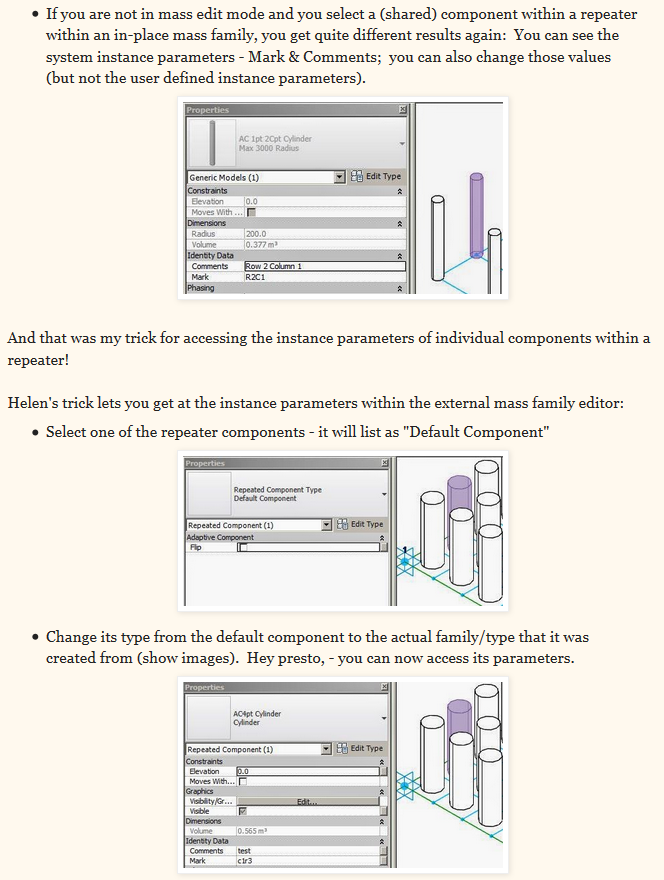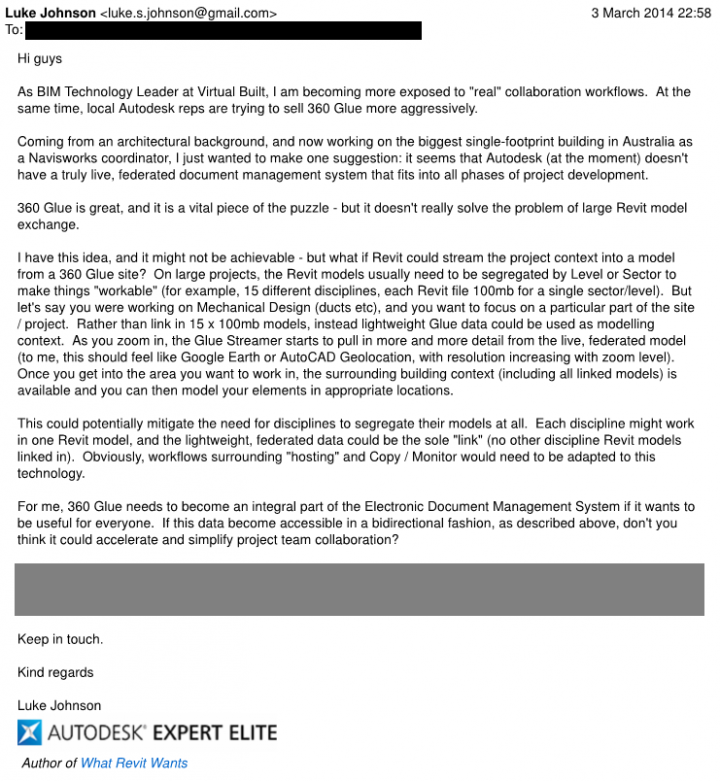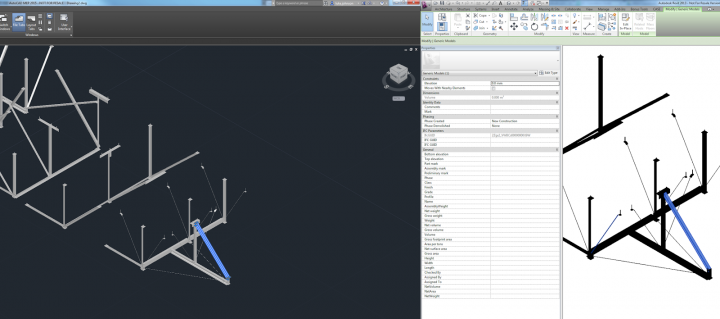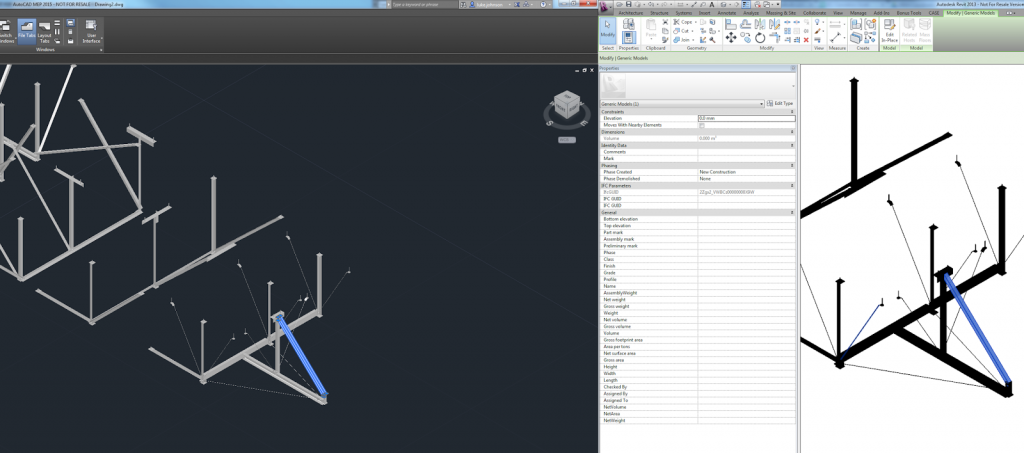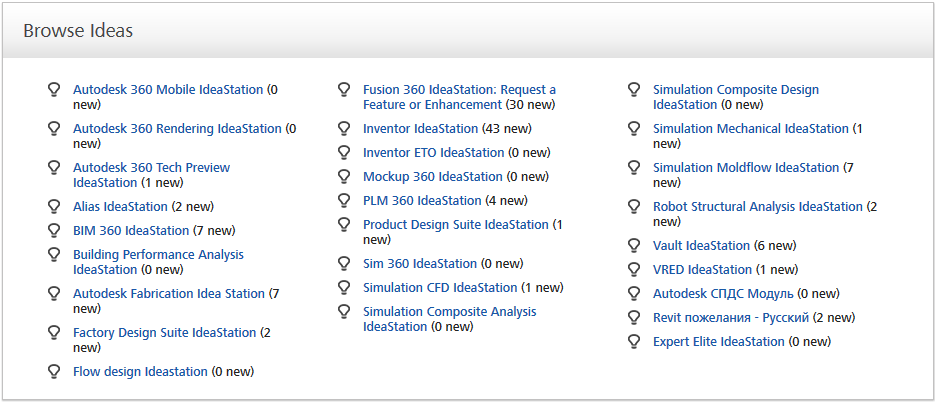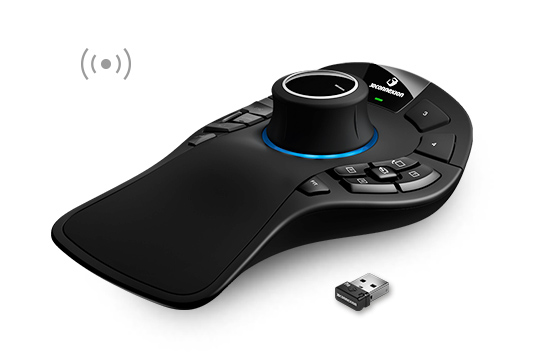Read the whole post:
RevitCat: Revit Repeater Instance Parameters
Month: July 2014
There are two additional recommendations I would make to the Autodesk solution below: use a Generic Model inplace family, and the import can be placed on an additional Subcategory to allow for easier control over visibility in the project environment.
Here is the Autodesk solution:
Issue:
You want to display cut 3D drawing models in section views. Revit displays the entire drawing without regard to cutting plane, both in section and floor plan views.
Causes:
Revit cannot currently display cut 3D drawing models in section views.
Solution:
- In AutoCAD, run EXPORTTOAUTOCAD to export a DWG file.
- Import or link the DWG file into an in-place family.
Support page:
3D drawing is not being cut in section or elevation in Revit | Revit Products | Autodesk Knowledge Network
Read Marcello’s whole post at:
Simply Complex: Applying IK in the Revit Classical Family Editor (one application… Folding Doors)
or watch his video:
Konrad has posted a video along with Dynamo nodes to demonstrate the management of tags based on their host type. Fire rated walls receive a certain tag, while non-fire rated receive a different one.
This is just one example showing that Dynamo isn’t just good for form creation. It has a legitimate role among the Python / Ruby / vanilla macro / API addin realm of Revit modification and customization.
Downloads at:
Revit/Dynamo | archi-lab
Original post:
Managing Family Types with Dynamo | archi-lab
Al Gore has posted 2.5 hours of free Revit tutorials for beginners over at:
Learn REVIT – REVIT FAMILIES AND COMPONENTS
He provides these starter files:
and describes how to navigate and manipulate the model starting from here.
The videos include more advanced topics as your proceed through the series, including items related to documentation (not just modelling).
According to Al, over they years they have:
“put together a strategy, from many different sources, on how to draft in Revit. Now we have created a system to teach people that strategy. Through teaching hundreds of students and many professional we understand their sticking points, where they go wrong, and what they struggle with. So for the beginner in Revit I am very happy with what we have put together and think it will be of great value.”
My idea from 4 months ago:
So, maybe its not Glue… with the benefit of current knowledge, maybe its Project Skyscraper, or some combination of these. But the External Reference possibility starts to make some of these things truly achievable. Watch this space!
The post from The Building Coder, 1 July 2014:
The Building Coder: Referenced Files as a Service
My tweet:
This has Big implications. from @jeremytammik MT@case_inc Files as a service: a new way to provide data to Revit … http://t.co/6Nytt5AvdT
— Luke Johnson (@lukeyjohnson) July 3, 2014
This can be done with AutoCAD MEP 2015, or Architecture, or similar verticals that have the IFCEXPORT command.
- Open AutoCAD MEP
- New DWG file
- IMPORT -> select SAT file
- IFCEXPORT
- Open IFC in Revit
The advantage of doing this over importing the SAT directly to a Generic Model family is that the IFC method will result in individual forms for each bit of the SAT file. If there are 1200 forms, you will get 1200 families in Revit. This, in turn, will export to Navisworks with this level of element hierarchy (instead of just one big imported SAT element).
This will also result in higher granularity of clashes when using the converted SAT via IFC method (more forms to clash against).
You probably know that you can attempt to explode a SAT in a Revit family, but I find that sometimes unsupported elements disappear using this method… so I like my way via AutoCAD a bit better at this stage.
IdeaStation is the Autodesk term for a place to share and rate your wishlist items on various products. The BIM 360 version is here:
BIM 360 IdeaStation – Autodesk Community
You can up the rating of a given idea by clicking the Kudos button. Do you like my idea?
There are IdeaStations for other Autodesk products too. Check them out at:
Ideas-Page – Autodesk Community
I have been a vocal supporter of 3D mice for some time now. I believe they make the experience of working with 3D models much more tactile and engaging. Personally, I use a SpacePilot Pro all day (the wired version), and it is brilliant for smoothly coordinating models in Navisworks. Newer versions of Revit (with improved display performance) have also made the 3D mouse proposition much more Revit-friendly.
I suggested the folks at 3Dconnexion run a competition through What Revit Wants, but I didn’t want to run a plain ‘ole “Why I want a 3D mouse” thing. Instead, I think its important for the designers and providers of these devices to understand why there is some resistance coming from the AEC community. Is it cost? Organizational restrictions? Have you tried them in the past and found them hard to use? I’m not giving you any more ideas – its a competition!
And if you are using one, why do you love it? Honest responses will be more highly valued.
Up for grabs are two SpaceMouse Pro Wireless devices – a cutting edge model, released just a few weeks ago. Here are the links to the competition entry pages:
You may also want to check out my review on using a SpacePilot Pro with Revit.
A few tips from Adam Sheather:
- Change your (Recap) temporary folder locations for conversion
- If you need to move cloud file between offices, convert them first to lower transfer times.
- Ask for ptg files for readability
- Using Remote Desktop services may be an issue if your card doesn’t support at least OpenGL 3.1 for remote services.
From:
Stuff and BIMs: Point Cloud beginer tips
You may also be interested in my detailed post at:
What Revit Wants: Creating Revit Geometry from Point Clouds (Points to BIM workflows)

